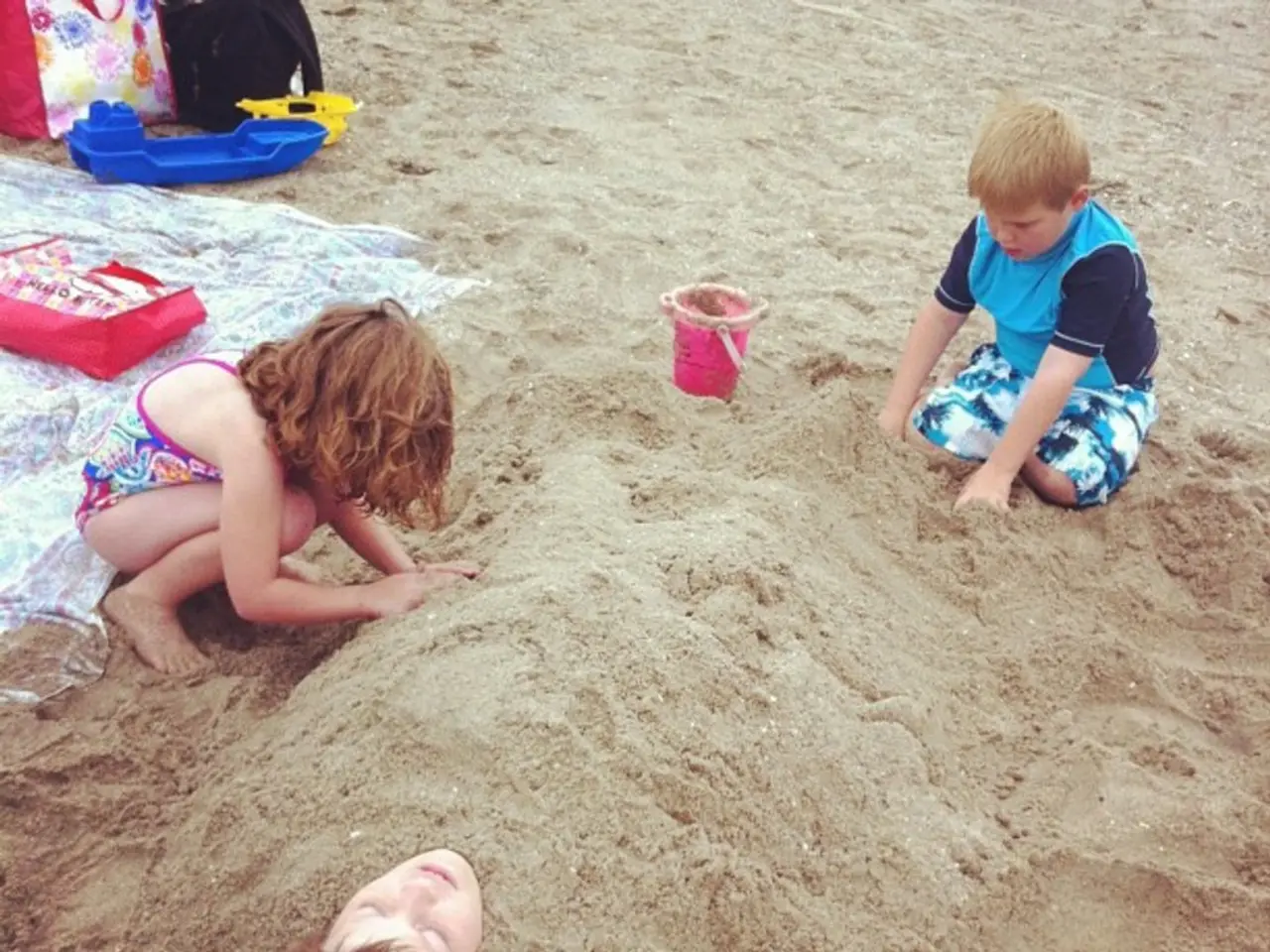Sand Therapy: A Form of Psychotherapy Involving Sculpting with Sand, Boasting Application, Insight, and Healing Properties
Sand tray therapy is a unique form of treatment that offers a multidimensional approach to helping adults and teens communicate their internal frustrations, find emotional release, self-reflection, and realization. Originating from the combination of play therapy and art therapy, this therapeutic technique uses miniature objects and toys to help individuals create and reflect on their world, expressing things they might not be able to through words.
This creative counseling technique has been found to improve a person's resilience, self-esteem, and decision-making skills. In a child center, a 2017 study revealed that a sand play therapy program effectively reduced aggression and negative peer interactions among children. Similarly, a 2021 study found sand tray therapy effective in improving various aspects of a child's self-esteem in a group therapy setting.
In the therapeutic process, the client and environment are carefully prepared to ensure safety, client-centeredness, and trauma-informed care. The sessions are held in a calm, peaceful space, sometimes with dimmed lights and soft music, to promote relaxation and safety. The therapist offers a prompt or directive to guide the client’s creation in the sand tray, such as "create your world," and observes quietly, offering support as needed without interference.
When the client is ready, therapist and client discuss and process the sand tray creation together, facilitating meaning-making, emotional expression, and insight. Techniques employed during this process are informed by neuroscience, trauma theory, and play therapy principles to support client expression and integration.
Sand tray therapy can also be used to resolve family communication barriers and support adoptive families with their adjustments. It has proven to be an effective way to explore the lived experience of people with cancer, cancer survivors, and their families. Furthermore, it can help people cope with grief and loss, as well as challenges with aggression, anger management, social interaction, school or work, low self-esteem, depression, anxiety, physical and learning disabilities, ADHD, and autism.
For individuals seeking a sand tray therapist, the International Association for Sand Tray Therapy provides a clinician directory. It's important to note that training and experience are essential to interpret the trays accurately and to facilitate deeper processing. Sand tray therapy was developed by Dora Kalff and Margaret Lowenfeld, building on Carl Jung's psychological framework.
In summary, the core therapeutic process involves preparing the client and environment, guiding symbolic creation in the sand, observing with therapeutic presence, and collaboratively processing the sand tray to promote insight and emotional healing. This hands-on, expressive approach offers a free, nonstructured, and protective space for people to heal, making it a valuable tool in the field of mental health care.
- Sand tray therapy, a unique mental health treatment, originating from play and art therapy, has been found to enhance a person's resilience, self-esteem, and decision-making skills, as revealed in both child and group therapy settings.
- In a health-and-wellness context, sand tray therapy has been proven effective in resolving family communication barriers, supporting adoptive families, and helping people cope with grief, loss, aggression, anger management, social interaction issues, low self-esteem, depression, anxiety, physical and learning disabilities, ADHD, and autism.
- Given its effectiveness, the International Association for Sand Tray Therapy offers a clinician directory for individuals seeking a sand tray therapist, emphasizing the importance of proper training and experience in interpreting trays accurately and facilitating deeper processing.
- The therapy's development is traced back to Dora Kalff and Margaret Lowenfeld, who built upon Carl Jung's psychological framework, with the core process involving preparing the client and environment, guiding symbolic creation in the sand, observing with therapeutic presence, and collaboratively processing the sand tray to promote insight and emotional healing, making it a valuable tool in the field of mental-health therapies-and-treatments.




